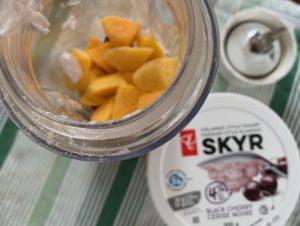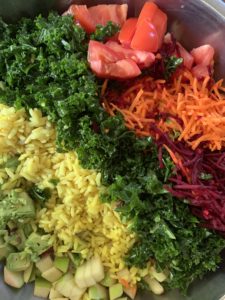
It’s increasingly clear that not only do we humans waste a lot, but that we’re not very good about cleaning up the mess we make – at least here in Canada, that is.
Instead of launching into a rant about it (which would be hypocritical, as I’m still working on mending my own wasteful ways), I’ll offer a tip I’ve learned over my almost-thirty years as a thrifty home cook.
Ready? It’s so simple! Always use a splash liquid of some sort to get the last dregs of food out of a squeeze bottle or plastic container.
If it’s ketchup, add a quarter cup of water, stock, or even wine. Use it to flavour a stir fry, soup, sauce or to cook grains like rice, couscous, quinoa, or barley.
If it’s yogurt, spill some milk, juice, or water in the tub, close the lid and give it a good shake. Add that to a smoothie, oatmeal, or cold cereal with fruit.
Mustard finished? Take the lid off, add a combination of one part vinegar to three parts oil, pop in some crushed garlic and/or other herbs and give it a good shake after putting the lid back on. Now you’ve got a vinaigrette that will last for days.

Do you used prepared boxed stock? Before throwing out the empty carton, swish a little water in and add the remains to whatever it is you’re cooking. Do the same with cans of tomato or tomato sauce, and use the liquid the next day to cook grains, or to add to soup or pasta sauce.
Sure, it’s a little thing – but little things add up to less food waste.
Every good recycler knows that cleaning out food containers properly is key to the process of reclaiming materials.
According to the recycling services of Toronto, where I’m writing this, containers with leftover food are one of the most common blue-bin sins; food residue soaks into paper and renders it unrecyclable. That’s a real waste.
There’s another benefit to keeping food waste out of the recycling bin that will be top of mind for many right now – it will mean less chance of getting ants in the house.

Like many pests, the type of ants you get may be particular to your geography. In Vancouver, Canada, for example, pesky types can include Carpenter ants (brown, black or red and black and about one and a half centimetres long) who dig wood structures to make their nests, Pavement ants (about three millimetres long and brown), they like to live under garage floors or baseboards, and Pharaoh ants (yellow, between one to three millimetres) who are fond of curtain rods and roof gravel.
Ants come into the home to get food and water. That’s why they especially like kitchens and bathrooms. If you have an ant problem in the bathroom, check right way both the bathtub and toilet for leaks, and tightly screw caps on body care products.

If you’re one of those poor unfortunates who has Entomophobia, a phobia of insects, and particularly if you are plagued with the specific fear that an ant will crawl into your ear, British Columbia-based Avon Pest Control has some re-assuring words.
They say that while it’s technically possible for an ant to march right in there, it is highly, highly unlikely—unless you have food in your ear.
In which case, Dear Reader, wash your ears.
This is a collaborative post. It was not reviewed prior to publication.




